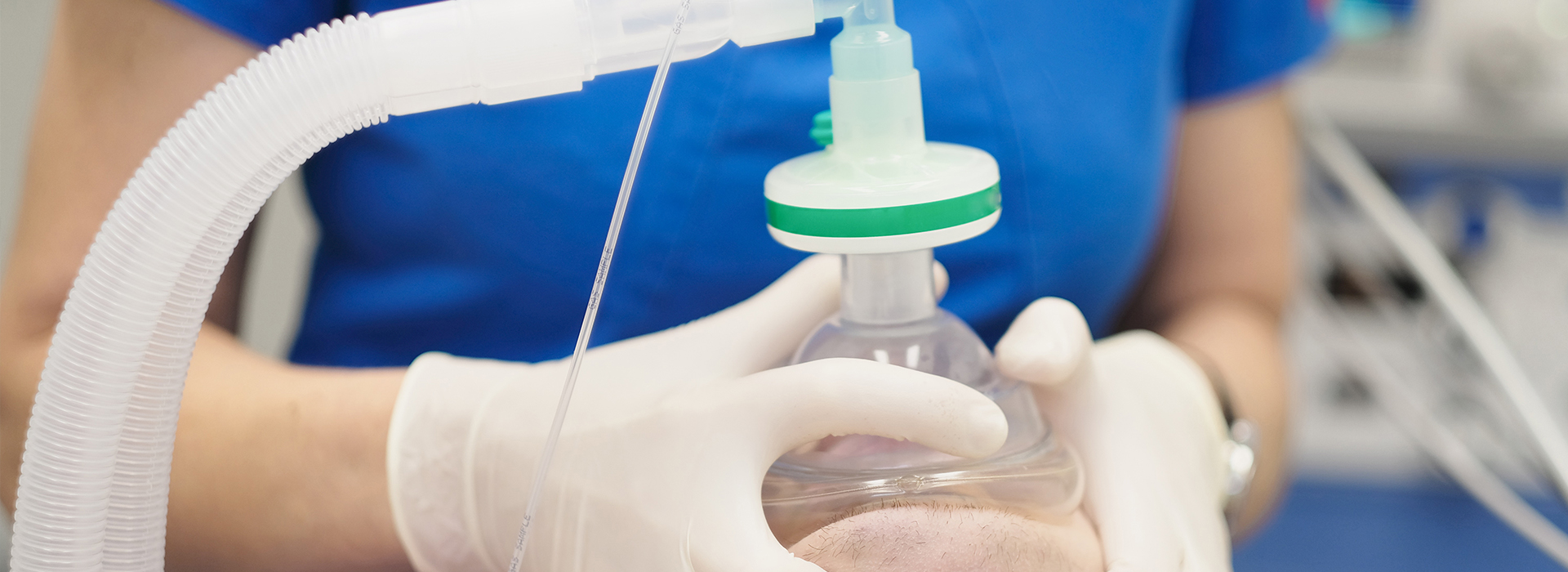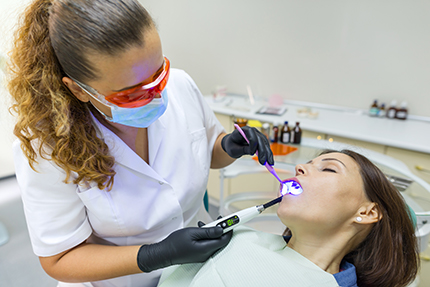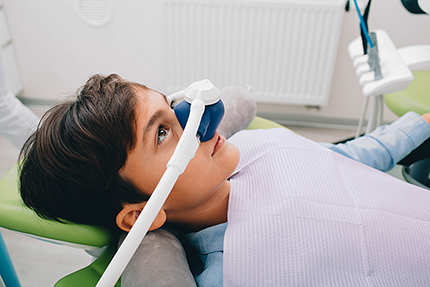Existing Patients
(740) 393-2161
New Patients
(740) 200-4777

Many people feel uneasy about dental visits—some experience mild nerves, while others confront a deep, immobilizing fear. If dental anxiety keeps you from routine care or delays important treatment, Brian Howe DDS, Family Dentistry offers proven sedation options to help you receive the dentistry you need without overwhelming stress. Our approach combines patient-centered communication, careful medical review, and monitored sedation techniques to create a calmer, more manageable experience.
Avoiding the dentist because of anxiety can allow small problems to become larger issues over time, affecting both oral health and overall wellbeing. Sedation dentistry is a tool that removes the emotional barrier and lets patients benefit from preventive care, restorative work, and longer procedures performed in fewer visits. Rather than forcing a hurried appointment, sedation helps people arrive relaxed and ready for safe, efficient treatment.
We understand that sedation can be an unfamiliar concept, and many patients have questions about how it works and what to expect. Below you’ll find clear, practical explanations of why sedation is used, the different types available in the dental office, and the safety steps we follow. Our goal is to equip you to make an informed decision alongside our team.
Before any sedation appointment, we review your medical history, current medications, and any previous reactions to sedatives so we can tailor care to your needs. You’ll receive straightforward instructions about preparation and recovery, and our staff will be on hand to guide you every step of the way.
Sedation dentistry is not about putting a person to sleep for no reason—it’s about creating a relaxed state that reduces anxiety, eases physical tension, and makes it easier to tolerate dental procedures. For many patients, sedation transforms an experience that once felt frightening into one that is calm and manageable. This helps both the patient and the dental team focus on achieving the best possible outcome.
By minimizing the emotional response to sights, sounds, and sensations in the operatory, sedation allows dentists to perform more thorough work with less interruption. That can mean completing multiple procedures in a single visit when appropriate, or simply making a routine cleaning far less stressful. Patients frequently report that the time passes quickly and that their memory of the treatment is minimal.
Importantly, sedation is provided in conjunction with local anesthesia for pain control. Sedation addresses anxiety and awareness; local anesthesia targets sensation. Combining the two offers both comfort and safety so that patients can tolerate necessary care without distress.

There are many valid reasons to consider sedation, and understanding them can help you decide whether it could benefit your care. For some people, a specific procedure triggers anxiety; for others, long or complex treatment makes sitting still difficult. Sedation provides a way to receive comfortable, effective care without the emotional burden that stops many from seeking treatment.
Dental phobia — Patients with intense fear of dental visits often need more than reassurance. Sedation offers a path to the chair that respects their concerns while allowing essential care to proceed.
Anxiety about a particular procedure — Whether it’s a surgical extraction or a lengthy restorative appointment, sedation reduces anticipatory stress so patients can get necessary treatment with less distress.
Extensive dental work — When multiple restorations or implant steps are needed, sedation helps patients stay comfortable for longer visits and can reduce the number of appointments required to complete treatment.
Strong gag reflex — A sensitive gag response can make care difficult for both patient and clinician. Sedation dampens that reflex, making examinations and treatment more tolerable.
Sensitivity in teeth and gums — For patients with heightened oral sensitivity, standard instruments and suction can be uncomfortable. Sedation blunts that sensitivity so treatment can proceed with minimal distress.
Challenges sitting still — Young children or adults with special needs, certain medical conditions, or cognitive limitations may have difficulty remaining still. Sedation enables providers to deliver safe, comprehensive care in these situations.

Selecting the right sedation method begins with a careful review of your medical history, medications, past anesthetic experiences, and the complexity of the planned procedure. We consider cardiovascular health, respiratory status, and any conditions that could affect sedation. This individualized assessment guides us to the level of sedation that delivers comfort while preserving safety.
We also discuss expectations and recovery with each patient before recommending a specific option. Some people prefer minimal intervention they can recover from quickly, while others need deeper calm for extensive procedures. Our team explains the pros and cons of each choice in plain language so you can weigh what matters most to you.
Throughout the appointment, trained staff monitor vital signs and responsiveness; adjustments are made as needed to maintain the intended sedation level. If a form of deeper anesthesia is necessary for medical reasons, we coordinate care with appropriate specialists and settings to ensure optimal supervision.
Conscious sedation keeps a patient relaxed and often drowsy but able to respond to verbal cues and breathe on their own. It is commonly used in dental offices to reduce anxiety and discomfort for many procedures. Deep anesthesia or general anesthesia results in an unconscious state and is typically managed in a hospital or surgical center with an anesthesiologist present.
For most patients who need help managing dental fear or sitting through longer appointments, conscious sedation is sufficient and safer for office-based care. Your medical profile and the complexity of treatment determine whether office sedation or a hospital-based anesthetic is the appropriate choice.
In the dental office, conscious sedation can be delivered in different ways depending on the level of relaxation required. Before your visit, we outline medication instructions, arrival procedures, and whether an escort is necessary. We explain how the medication will affect your awareness and what actions you should take before and after the appointment to ensure a smooth recovery.
Our team monitors breathing, blood pressure, heart rate, and oxygen levels during sedation. Equipment and protocols are in place to respond immediately to changes in condition. Staff training and ongoing reviews of sedation practices are central to our commitment to safe, comfortable care.
Nitrous oxide, commonly called laughing gas, is inhaled through a small nasal mask and provides mild to moderate relaxation. Its effects begin quickly and wear off almost immediately when the gas flow is stopped. Because it is easily titratable and has a short recovery time, nitrous oxide is a good option for patients with mild anxiety or gag reflex concerns.
Oral sedation uses a prescribed medication taken before the appointment to produce a deeper state of relaxation. While many patients remain conscious and responsive, they typically feel drowsy and have little memory of the procedure. An escort is required to drive the patient home following oral sedation, and we provide clear pre-visit guidance on timing and safety.
IV sedation delivers medication directly into the bloodstream and can achieve a deeper level of sedation with rapid onset and precise control. It is appropriate for more complex or lengthy procedures and for patients who need a higher degree of anxiety relief. Because IV sedation can affect consciousness and protective reflexes, fasting instructions and an escort for transportation are required.
Patients who receive IV sedation are monitored continuously, and recovery is supervised until safety criteria for discharge are met. We review fasting times and medication instructions well in advance so you arrive prepared.
Preparation is a key part of safe sedation. Ahead of your visit we will review medications, allergies, and any chronic conditions. You may be asked to avoid food and drink for a period before IV sedation, and to arrange a responsible adult to accompany you home after oral or IV sedation. Clear, written instructions are provided so you know exactly what to expect.
Plan to limit strenuous activities for the remainder of the day after sedation and avoid operating heavy machinery until you are fully recovered and advised by our team. If you take regular medications, we will guide you on whether to continue or temporarily pause them before your appointment.
We encourage patients to raise concerns or ask questions in advance so the care plan addresses both medical safety and personal comfort. A well-informed patient is better positioned for a calm experience and smoother recovery.
Safety is the foundation of any sedation program. Our clinicians and staff maintain training in sedation protocols, emergency response, and monitoring technologies. During sedation, we continuously monitor vital signs and level of consciousness, and we have equipment and medications ready to respond to rare complications.
Regular reviews of patient records, adherence to clinical guidelines, and open communication among the dental team help ensure each sedation appointment is managed with consistent standards. If a patient’s health profile suggests increased risk, we coordinate care with medical providers or recommend care in a setting with higher levels of medical support.
Aftercare includes written discharge instructions and a post-procedure check-in to confirm recovery. If you experience unexpected symptoms after sedation, our team provides clear guidance on when to seek urgent care and how to contact the office for follow-up.
Sedation dentistry can make the difference between avoiding care and receiving the treatment you need comfortably and safely. If anxiety or difficulty sitting through dental work has been a barrier, our team can explain options and develop a plan that prioritizes both comfort and clinical quality. Contact us to learn more about sedation choices and whether they are right for you.
Sedation dentistry refers to techniques and medications used to reduce anxiety and increase comfort during dental treatment. It ranges from mild relaxation with inhaled gases to deeper states achieved with oral or intravenous medications. Sedation does not replace local anesthesia; it complements numbing agents so patients remain comfortable and pain-free during procedures.
The goal of sedation is to create a calm, manageable experience so patients can receive necessary care without the emotional barrier of fear. Patients often report less awareness of time and minimal memory of the procedure, which helps reduce future anxiety about dental visits. Decisions about sedation are made case by case based on medical history, procedure complexity and patient preference.
Candidates for sedation dentistry include people with dental anxiety or phobia, those facing lengthy or complex procedures, and patients with a strong gag reflex or heightened oral sensitivity. Adults who have difficulty sitting still, patients with special needs, and individuals requiring multiple restorations in one appointment may also benefit. A thorough medical and medication review helps determine suitability for office-based sedation.
Not every patient needs the same level of sedation; many benefit from mild, easily reversible options while others require deeper, closely monitored approaches. Certain medical conditions or medications can affect the choice or safety of sedation, so open communication about health history is essential. When deeper anesthesia is indicated, coordination with specialists or a hospital setting may be recommended.
Common office-based sedation methods include inhaled nitrous oxide, oral sedatives, and intravenous (IV) sedation. Nitrous oxide produces mild to moderate relaxation and has a rapid onset and recovery, making it suitable for shorter procedures or patients with mild anxiety. Oral sedation involves a prescribed pill taken before the appointment to produce moderate drowsiness and amnesia for the visit.
IV sedation delivers medications directly into the bloodstream for rapid, titratable control and can achieve deeper sedation levels when needed for extensive procedures. Regardless of the method, local anesthesia is used concurrently to control pain at the treatment site. The choice of technique depends on patient needs, medical history, and the complexity of the planned care.
Selection starts with a comprehensive assessment of medical history, current medications, allergies and any prior reactions to anesthetics or sedatives. The team evaluates cardiovascular and respiratory status and considers factors such as age, body weight and the expected length and invasiveness of the procedure. This individualized review guides the recommendation for the appropriate sedation level and delivery method.
At Brian Howe DDS, Family Dentistry, staff explain the benefits and limitations of each option so patients can make informed decisions. When a patient’s health profile suggests elevated risk, the office coordinates with medical providers or refers to care in a setting with enhanced anesthesia support. Written pre-procedure instructions and monitoring plans are provided to ensure a safe experience.
During sedation, trained staff continuously monitor vital signs including heart rate, blood pressure, oxygen saturation and respiratory status to ensure stability. Level of consciousness and responsiveness are assessed regularly, and equipment to support airway and circulation is available if needed. Protocols for emergency response and the use of reversal agents are in place as part of standard safety measures.
Ongoing staff training in sedation protocols and emergency management is essential to safe practice and is routinely maintained. Documentation of monitoring data and stepwise adjustments to sedation help maintain the intended level of relaxation while prioritizing patient safety. If a deeper anesthetic level is required beyond office capabilities, the team arranges care in an appropriate facility with specialist oversight.
Preparation typically includes a detailed review of medications, medical conditions and any history of adverse reactions to sedatives or anesthesia. For certain sedation types, especially IV sedation, patients are usually instructed to refrain from eating or drinking for a specified period before the appointment and to arrange for a responsible adult to provide transportation home. Clear written instructions are provided so patients understand fasting, medication, and arrival procedures.
Patients should disclose all prescription drugs, over-the-counter medications and herbal supplements because some substances can interact with sedatives. Follow the team’s guidance about which routine medications to take or withhold on the day of the procedure. Bringing a list of current medications and emergency contact information helps the team plan safe care.
Recovery varies by the type and depth of sedation used; nitrous oxide typically wears off quickly and patients may resume normal activities soon after, while oral or IV sedation can cause drowsiness for several hours. Patients who receive oral or IV sedation are advised to rest for the remainder of the day, avoid driving or operating machinery, and arrange for a companion to assist with transportation and immediate care. The practice provides written aftercare instructions and criteria for when normal activities can be resumed.
Mild side effects such as grogginess, dry mouth or temporary nausea can occur and usually resolve within hours. If patients experience unexpected symptoms or prolonged recovery, the office advises when to seek urgent care and provides follow-up contact information. Planned post-procedure check-ins help confirm that recovery is progressing as expected.
Sedation can be an effective option for some children and for patients with developmental, cognitive or physical challenges that make dental care difficult. The decision is based on age, medical history, behavior, and the complexity of the planned treatment, and it requires careful dosing and monitoring tailored to the individual. Pediatric sedation follows specific safety guidelines and often involves pediatric-trained clinicians or consultation with specialists when necessary.
Our team at Brian Howe DDS, Family Dentistry assesses each case to determine whether office-based sedation is suitable or if referral to a specialist or ambulatory center is safer. Parental or caregiver involvement, informed consent and clear post-procedure care instructions are integral parts of treating minors and patients with special needs. Coordinated care and transparent communication help ensure that procedures proceed safely and with minimal distress.
Common, generally short-lived side effects include drowsiness, dizziness, nausea and dry mouth; these effects typically resolve within hours as the sedative wears off. More serious complications are uncommon but can include respiratory depression or cardiovascular changes, which is why vigilant monitoring and proper patient selection are essential. Discussing your full medical history and current medications helps the team identify and mitigate potential risks.
Staff training, appropriate equipment and adherence to established sedation protocols reduce the likelihood of adverse events. If a patient’s medical profile indicates elevated risk for office-based sedation, the team will recommend a setting with higher levels of anesthesia support. Clear post-procedure instructions and readily available contact information help address any unexpected concerns during recovery.
Sedation dentistry can make it easier for patients to accept and tolerate necessary care, which reduces delays in treatment and helps prevent small problems from becoming larger issues. By minimizing anxiety and movement, sedation allows clinicians to work more efficiently and complete more comprehensive care during a single visit when appropriate. This can enhance procedural quality and the overall patient experience.
Beyond the immediate procedure, a positive sedation experience can reduce future dental fear and make routine care more accessible for anxious patients. Educating patients about options, safety measures and recovery helps set realistic expectations and promotes trust in the care plan. Open communication with the dental team ensures that sedation supports both clinical needs and patient comfort.
Our friendly and knowledgeable team is always ready to assist you. You can reach us by phone at (740) 393-2161 or by using the convenient contact form below. If you submit the form, a member of our staff will respond within 24–48 hours.
Please do not use this form for emergencies or for appointment-related matters.
